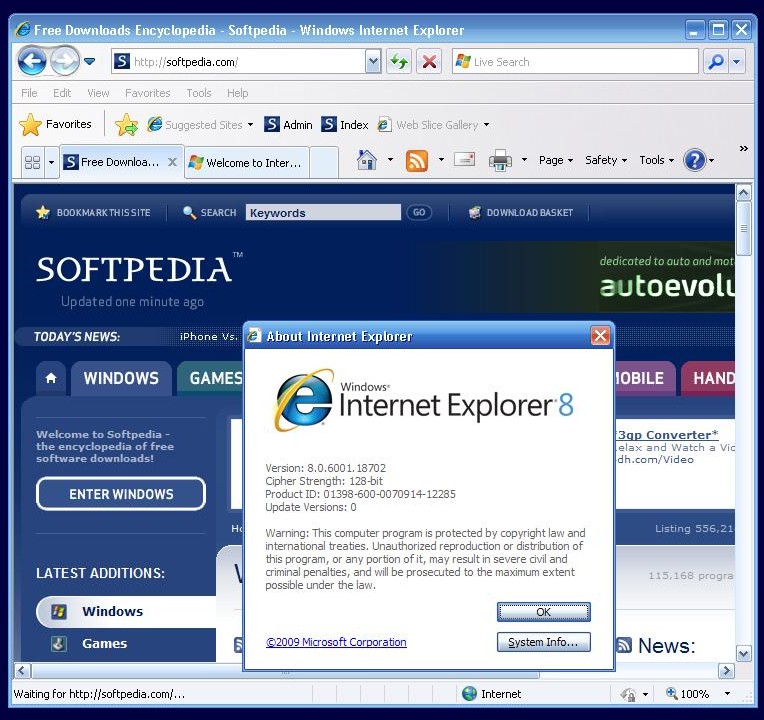


This will be a correct communication informing your customers and at the same time offering them a chance to brain storm and improve, one day, their security :).
#Internet explorer 8 windows xp full
Upon disagreement, congratulate him for making a good choice and hope to see him back soon within an environment of full trust. Upon explicit agreement from the user, redirect him toward the core of your webserver through HTTPS. Insecure connection even with the infamous small lock which might be displayed, even with your server URL starting with and even with the high grade certificates you installed on your web server. Redirect client toward a web page indicating that you identified he is connecting from a computing environmnet which is known as unsecure.Ĭlearly assert you can't be hold responsible for any spy upon his connection which might occur at the level of his computer and his choosen software.Īsk him if he accepts the risk involved and want to proceed with an Hence I would suggest a 2 steps approach for a webserver architect.ĭetect the referer, and if it is IE any version or XP any version, It was a known weak combination long before Microsoft announced its support deadline.

Secured by a normal and even a skilled user. What factors should a website's operator weigh when determining whether to continue to attempt to serve secure pages to IE/XP users? Are there any overwhelming arguments as of the first quarter of 2015 for accommodating or blocking IE/XP on a secure site?Įven an HTTPS connection from IE or Windows XP can't be considered as
#Internet explorer 8 windows xp install
A malicious actor could install unwanted software by exploiting a zero-day vulnerability resulting from one of these defects, which would defeat the confidentiality purpose of HTTPS in either of two ways: This means there are defects in IE/XP that Microsoft will no longer fix. However, as of April 2014, extended support for IE/XP and the rest of Windows XP has ended.

(This setting will not apply to dial-up or VPN connections.) In the resulting dialog box, place a check mark next to "Use a Proxy Server For Your LAN. Select "Tools," then select "Internet Options." Then click on the "Connections" tab.Ĭlick the "LAN Settings" button. Uncheck the box next to "Enable Access to this Program" next to "Internet Explorer."Ĭlick "OK." Internet Explorer 8 will now be disabled.ĭisable Internet Explorer 8 On The Browser Itself Then press "OK."ĭisable Internet Explorer 8 in Windows VistaĬlick on the link "Turn Windows Features on or off."ĭisable Internet Explorer 8 in Windows XPĬlick "Start" and select "Program Access and Defaults." Uncheck the box next to Internet Explorer to disable it. Click "Start," then select "Control Panel" and choose the "Programs" option.Ĭlick on the link "Turn Windows Features on or off" underneath "Programs and Features."


 0 kommentar(er)
0 kommentar(er)
